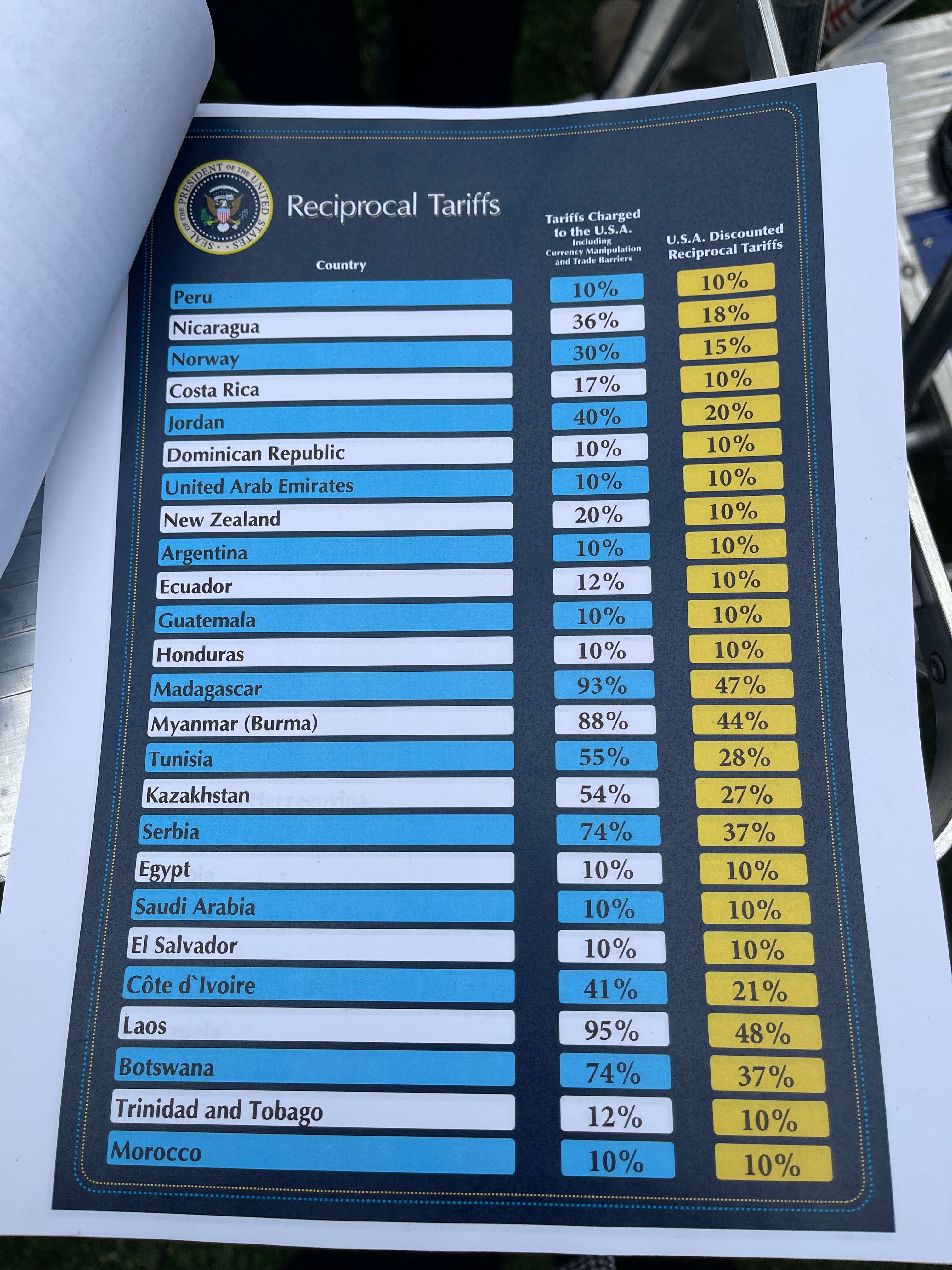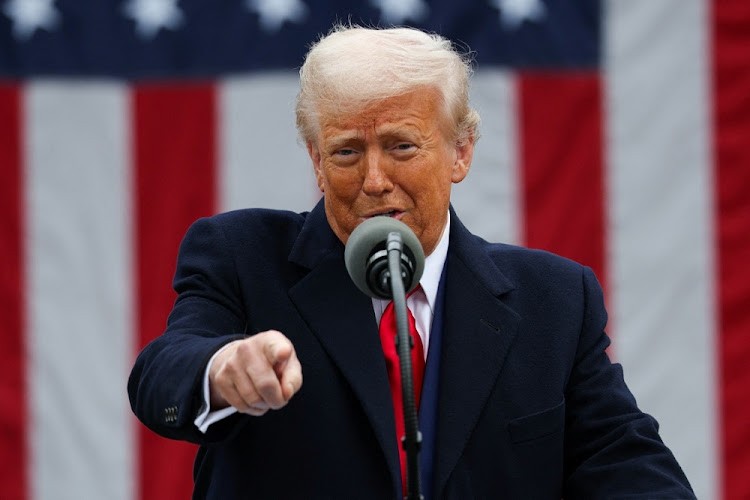The White House announced a 10% benchmark tariff increase on all trading partners and differentiated tax rates on 34 major economies.
At 4 pm Eastern Time on April 2, with the signing of two executive orders, the United States officially launched the "reciprocal tariff" policy.
The White House announced a 10% benchmark tariff increase on all trading partners and differentiated tax rates on 34 major economies.
Specifically, in addition to the benchmark 10% tariff, the United States has implemented "precise strikes" on trade deficit countries: China's tax rate designs of 34%, the European Union's 20%, Japan's 24%, and South Korea's 25%, essentially building a new tariff matrix.What is even more devastating is that the 25% automobile tariff is extended to computer products. Although the 4% import tax on notebook computers may seem moderate, it is actually the lifeline of the global electronics industry chain.This combination of "carpet + precision strike" has caused the United States 'effective tariff rate to soar from 2.4% to 25.1%, surpassing the level of the 1930 Smoot-Hawley Tariff Act and setting the highest trade barrier since World War II.

The action, which the White House called the "Declaration of Economic Independence," triggered violent shocks on Wall Street-Nasdaq index futures plunged 4%, Apple's market value evaporated by 1.8 trillion yuan, and the price of gold exceeded the historical high of $3160 per ounce. Global capital markets cast panic votes with real money.
The White House said that under this tariff framework, annual income increases could be increased by US$737.4 billion.However, Moody's research report shows that the actual annual income may be less than US$200 billion. The so-called "using tariffs to support tax cuts" is actually a fantasy.The deeper strategic intention is to reshape global supply chains and force manufacturing back by raising trade costs.
One example is that the United States imposes high tariffs on ordinary goods, but it exempts key industries such as semiconductors and pharmaceuticals. This exposes the United States 'contradictory mentality of not only attacking competitors but also protecting its own industrial chain.This kind of selective protectionism is essentially replacing multilateral rules under the WTO framework with unilateral pricing power of "U.S. first".
The market reacted immediately.While futures on the three major U.S. stock markets collectively plunged, the Chicago Board Options Exchange's Panic Index (VIX) surged 28% in a single day, the largest increase since March 2022.
This panic is not groundless. Yale University Budget Laboratory models show that if trading partners implement reciprocal retaliation, the price increase of personal consumption expenditure in the United States will expand to 2.1%, real GDP growth will fall by 1 percentage point, and the annual loss of middle-class households will reach $3800.Even more dangerous is the self-realization of inflation expectations-a University of Michigan survey shows that consumers 'inflation expectations for the next five years have climbed to 4.1%, the highest level since 1993, which will severely weaken the Fed's monetary policy space.
Global supply chains are undergoing "nuclear fission" restructuring.Bloomberg research found that supply chain costs of multinational companies have soared by 40%, with long-chain industries such as electronics, automobiles, and machinery bearing the brunt.Take the automobile industry as an example. If a 25% vehicle tariff is superimposed on parts and components tariffs, the cost of a bicycle may increase by US$10000. This impact will be transmitted upstream along the industrial chain and may eventually turn into a global overcapacity crisis.
A more hidden risk lies in technology decoupling-semiconductor tariff exemptions seem to be good for the U.S. chip industry, but actually accelerate the independent research and development process of various countries.TSMC recently announced a 30% increase in its 5nm chip research and development budget. This forced technology arms race is disrupting the global innovation collaboration system.
The wave of counter-measures in the international community has formed a trend of encirclement.The European Commission has launched a "balancing mechanism" legislative process to impose taxes on US$65 billion in U.S. goods; the Canadian Parliament urgently passed the Trade Remedy Act, authorizing the government to implement quota controls on agricultural products; and the Association of Southeast Asian Nations is preparing a unified tariff plan.
This trend of "de-dollarization" trade settlement has a resonance effect with tariff counterattack-the latest data from the Brazilian Central Bank shows that the proportion of RMB settlement rose to 28% in March, a record high.The multilateral trading system is undergoing its most severe test since the establishment of the WTO in 1995. The "rule vacuum" triggered by U.S. unilateralism may lead to the fragmentation of global trade.
In this big economic gamble, the Trump administration has clearly underestimated the complexity of the modern economy.The Peterson Institute pointed out that when the tariff act was implemented in 1930, U.S. manufacturing accounted for 25%, but now it has shrunk to 11%. The service-dominated economic structure is simply unable to absorb the trade protection dividend.What's even more ironic is that the so-called "manufacturing reflux" is happening in the reverse direction-Tesla's Shanghai Superfactory announced a 40% increase in Model Y production capacity. This "tariff avoidance investment" has instead strengthened China's position in the global value chain.
History is always strikingly similar but different.Tariff barriers in 1930 pushed the world into the abyss of the Great Depression. Today, the United States '"tariff weaponization" policy is interpreting a new version of economic tragedy in the digital age.When the White House declared that April 2 was "Economic Independence Day," global capital markets voted with capital flight, economists used recession warnings to speak out, and industrial chains used reconstruction to survive-this 21st century "Smoot-Hawley moment" will eventually go down in history, perhaps depending on whether countries can find a rational consensus in the smoke of a trade war.


